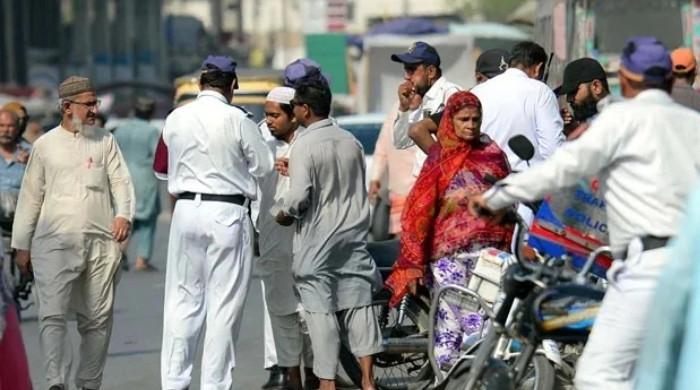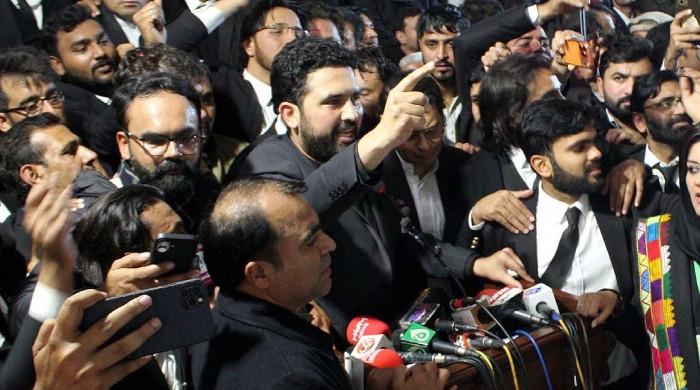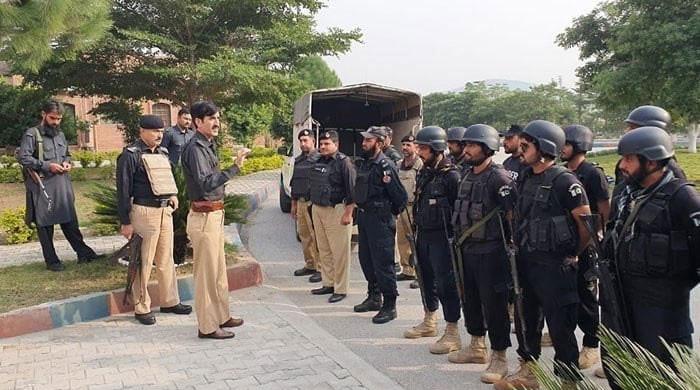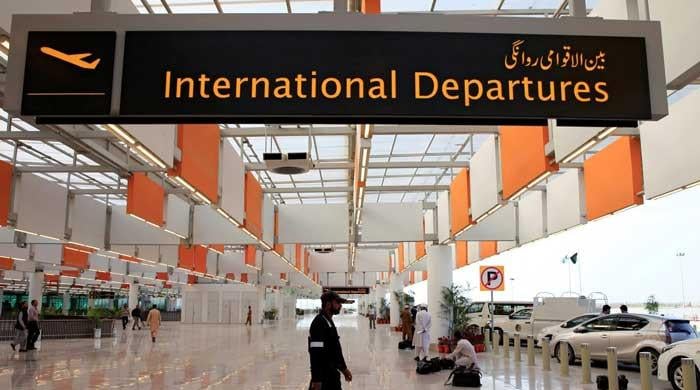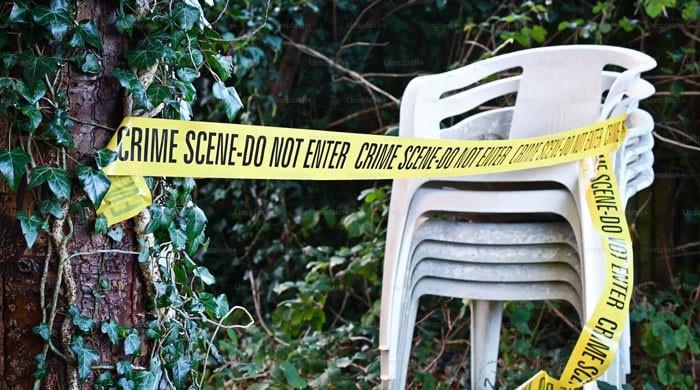What is driving Karachi’s Seraiki migration wave?
Karachi is witnessing a rapid and consistent migration from certain parts of southern Punjab
April 11, 2016
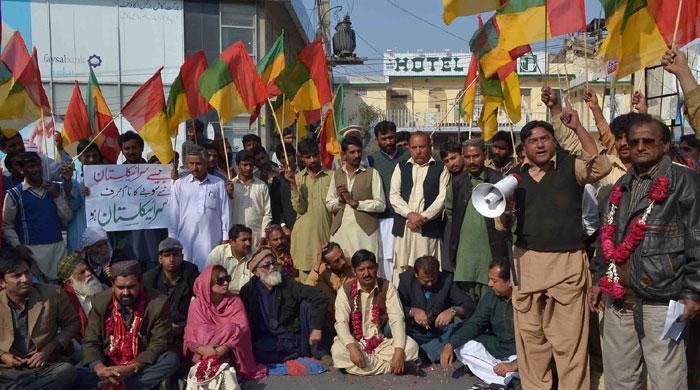
KARACHI: Muhammad Shafiq, 19, who works as a barber in Hijrat Colony, had migrated from a village of tehsil Liaquatpur in Rahimyar Khan district to Karachi in 2014 to earn a livelihood.
He lives in the same area at a dera – a male-only shared house – comprising two small rooms, shared by 10 or sometimes more men of different ages most of them from Rahimyar Khan and Rajanpur districts of southern Punjab – a kitchen and a washroom, for which he pays Rs1,200 per month.
The occupants of the dera are affiliated with different professions – daily-wage masons, rickshaw drivers, domestic aides in bungalows in the neighbouring posh areas of Bath Island and Clifton, and private security guard. All of them have migrated to Karachi during the last five years to make a living.
Karachi is witnessing a rapid and consistent migration from certain parts of southern Punjab. Although the increase in Karachi’s population is mainly attributed to conflict and natural disaster-related migration from Khyber Pakhtunkhwa and Fata, social researchers said a large-scale migration for economic reasons was taking place from the impoverished districts of southern Punjab to the city in the last 10 years.
Political economist Dr S Akbar Zaidi said since the Partition, Karachi had been braving large-scale migrations but in every decade, it was from different areas. “Now it is the decade of migration from southern Punjab to the city,” Zaidi told The News.
Karachi saw a large-scale migration of Urdu speakers from India after the Partition in 1947 and it continued in the 1950s, Pashtuns from the then North West Frontier Province in the 1960s when rapid industrialisation created job opportunities for manual workers in the construction and textile fields, Bihari community from Bangladesh in the 1970s after the fall of Dhaka, and then Punjabis from different parts of Punjab in the 1980s, Zaidi explained.
Seraikis in Karachi
According to the census data of 1998, the Seraiki speaking population in the city was 2.11 percent at that time.
However, the community’s leaders said they were misrepresented in the census by being classified as Urdu or Punjabi speakers.
They added that the continuous migration from southern Punjab since 2001 because of several reasons, especially to find employment, had significantly increased the number of Seraikis in the city.
Abdul Jabbar Abbasi, the head of the Pakistan Seraiki Qaumi Ittehad (PSQI), a political group representing the Seraiki community in Karachi, said the community had become socially, culturally and politically visible in the city in last 15 years.
“I can safely say that there are around 2.5 million Seraikis in the city now,” Abbasi told The News.
In the beginning, they lived without families in shared houses across the city, but following the recent wave of migration, they live, both with and without families, primarily in Hussain Hazara Goth, Sikandar Goth, Hijzrat Colony, Keamari, Machar Colony, Nusrat Bhutto Colony, Hazrat Bilal Colony, Mehmoodabad and Kalapul, Abbasi maintained.
Seraiki self-identification has grown among the intelligentsia, and political mobilisation on the basis of ethnic identification is clearly seen in Karachi, although without much popular response.
Groups such as the PQSI regularly organise cultural and political events in the city. In February, hundreds of Seraikis gathered at the Kashmir Road Sports Complex to commemorate the International Mother Tongue Day.
Politically, most of them support the Pakistan People’s Party because it supports the creation of a southern Punjab province.
Professions
Community leaders, social researchers and Seraiki labourers say most recent migrants from southern Punjab are unskilled and low-paid workers.
They are mainly barbers, masons, tailors, waiters and private security guards.
However, they prefer working as domestic aides in the city’ affluent areas, rickshaws drivers and labourers in textile factories.
Abubakar Yousafzai, a researcher who worked on a development project in Hijrat Colony, said the number of Seraikis in the neighbourhood had dramatically increased in the last 10 years, because of the area’s close proximity to the city’s posh areas of Clifton and Bath Island.
“Most Seraikis living in Hijrat Colony work in bungalows as domestic aides, drivers and gardeners,” Yousafzai told The News.
“At first, they were living without families but now they have started bringing their families too. Now, their women too work as domestic aides in bungalows.”
Recently they have started driving rickshaws in the city, a profession previously dominated by the Pashtuns of Buner and Torghar districts of Khyber Pakhtunkhwa.
Yousafzai said the children of Pashtun rickshaw drivers, who had arrived in the city in the 1970s as migrant workers, were no longer interested in it and had taken up other professions.
“After a ban on two-stroke rickshaws and the introduction of CNG and qingqi rickshaws in the city, it has now become a Seraiki-dominated profession.”
Murtaza Hussain, an owner of a qingqi rickshaw that plies at NIPA Chowrangi, said most drivers were from southern Punjab and northern Sindh.
“In August last year, thousands of Seraiki qingqi rickshaw drivers in Karachi lost their livelihoods when the Sindh High Court had banned this mode of transportation,” Hussain told The News.
Garment factories in Karachi are preferring labourers, both skilled and unskilled, who have arrived from southern Punjab. A manager at a textile mill in Landhi said Seraiki migrant workers lived without families in Karachi and usually went to their hometowns only once a year for two or three weeks.
“Earlier, we preferred Pashtun labourers but in the last two decades, they have started living in neighbouring localities and become too involved in local politics, pressuring factories’ managements,” he said.
“We usually don’t hire Sindhi labourers because they frequently visit their villages which are near and so easily accessible.”
Seraikis are also the cheapest construction workers in Karachi and a good number of them can be found at any major construction site.
Factors behind migration
Jamshaid Rizwani, a Multan-based journalist, there had been a marked increase in migration from certain districts of southern Punjab in the last 10 years, particularly to Karachi, mainly because the ratio of unemployment was very high there and the limited industrial infrastructure did not create many job opportunities.
—Originally published in The News




